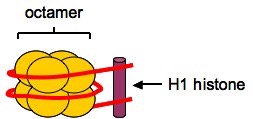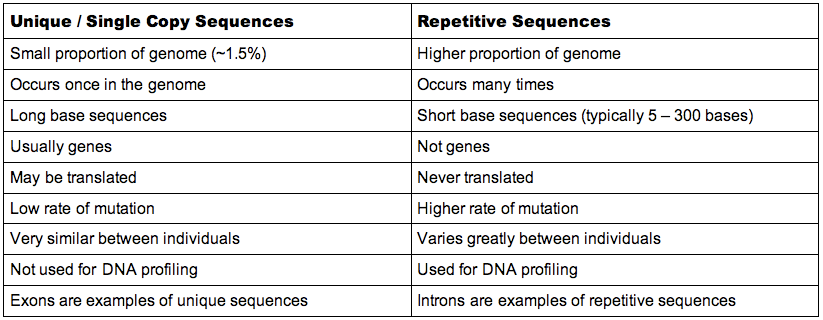7.1.1 Describe the structure of DNA, including the antiparallel strands, 3' - 5' linkages and hydrogen bonding between purines and pyrimidines
- The carbon atoms in deoxyribose are numbered, with the nitrogenous bases attach to C1 and the phopshate group is attached to C5
- Nucleotides are joined by a covalent phosphodiester bond between the C5 phosphate group and the C3 hydroxyl group
- Hence one nucleotide strand runs 5' - 3'
- The nitrogenous bases interact via hydrogen bonding (complementary base pairing)
- Adenine (A) and thymine (T) share 2 hydrogen bonds
- Guanine (G) and cytosine (C) share 3 hydrogen bonds
- In order for the bases to associate (i.e. face each other), one strand must run antiparallel to the other (this antiparallel strand runs 3' - 5')
- Double stranded DNA forms a double helix, with 10 nucleotides per turn and the structure containing both major and minor grooves
Structural Organisation of DNA

7.1.2 Outline the structure of nucleosomes

- The DNA double helix contains major and minor grooves on its outer diameter, which expose chemical groups that can form hydrogen bonds
- The DNA of eukaryotes associates with proteins called histones
- DNA is wound around an octamer of histones (146 bases and 1.65 turns of the helix per octamer)
- The octamer and DNA combination is secured to a H1 histone, forming a nucleosome
7.1.3 State that nucleosomes help to supercoil DNA and help to regulate transcription
- Nucleosomes serve two main functions:
- They protect DNA from damage
- They allow long lengths of DNA to be packaged (supercoiled) for mobility during mitosis / meiosis
- When supercoiled, DNA is not accessible for transcription
- Cells will have some segments of DNA permanently supercoiled (heterochromatin) and these segments will differ between different cell types
7.1.4 Distinguish between unique or single copy genes and highly repetitive sequences in nuclear DNA

7.1.5 State that eukaryotic genes contain introns and exons
Intron: A non-coding sequence of DNA within a gene (intervening sequence) that is cut out by enzymes when RNA is made into mature mRNA
Exon: The part of the gene which codes for a protein (expressing sequence)
- Eukaryotic DNA contains introns but prokaryotic DNA does not